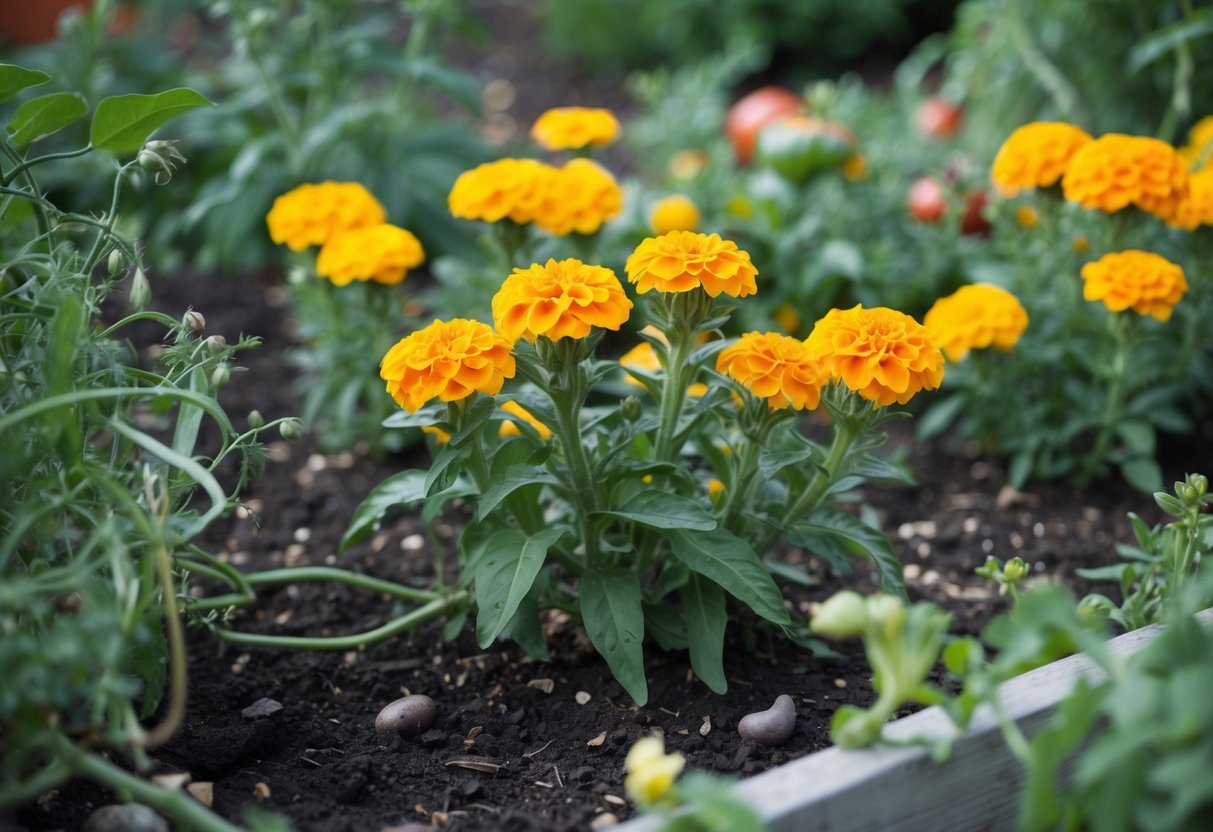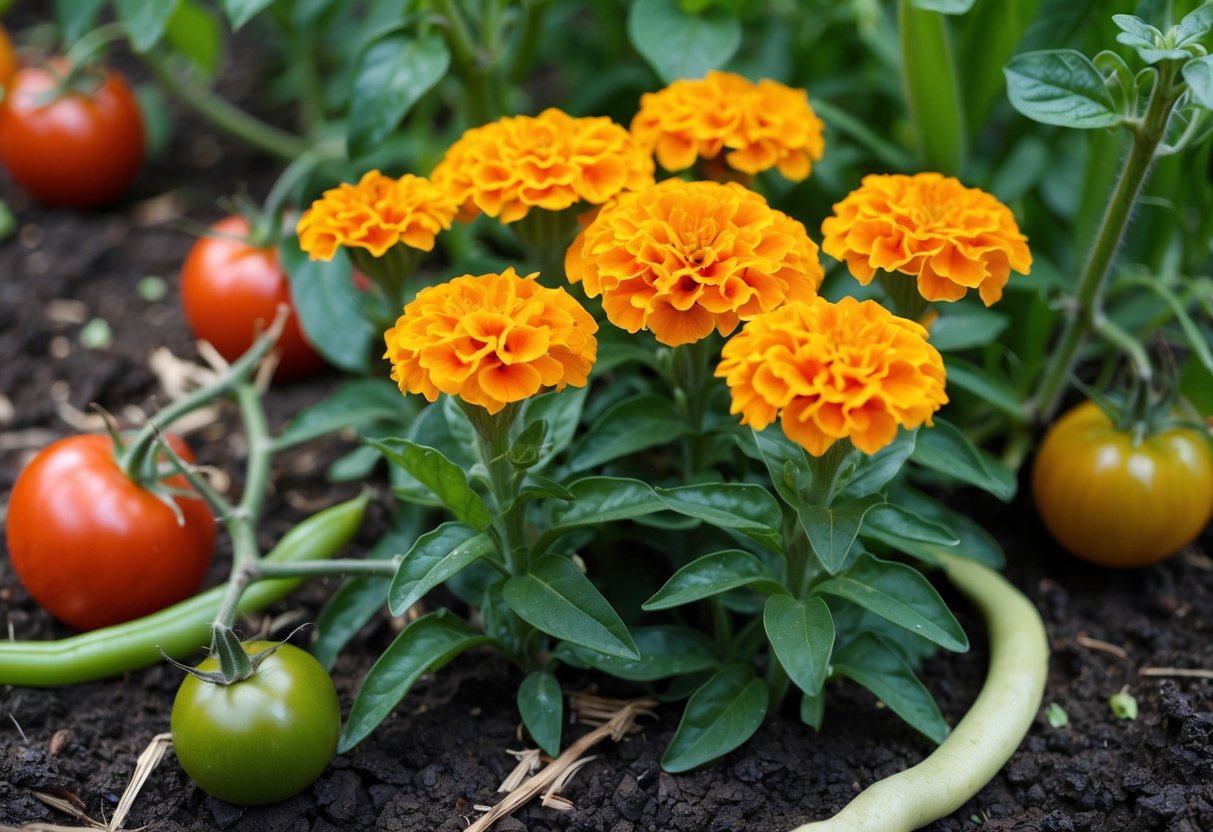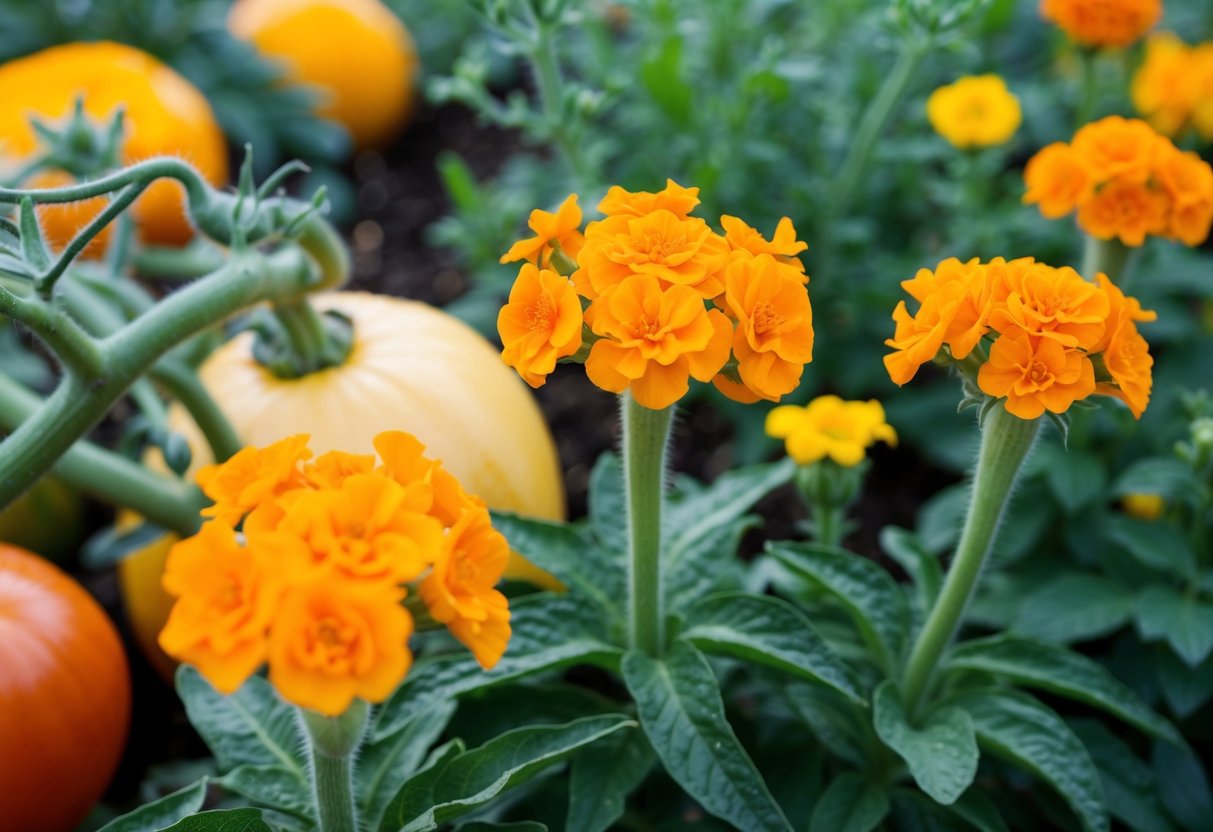What Not to Plant with Marigolds: Avoid These Companion Plants
When planning your garden, it’s important to think about companion planting and which plants will thrive together. Marigolds are known for their pest-repelling abilities, which makes them a favorite among gardeners. However, it’s crucial to remember that potatoes are one plant you should avoid pairing with marigolds, as they can interfere with each other’s growth. The chemicals released by marigolds can hinder the tuberization process in potatoes, leading to smaller yields.

While marigolds protect many plants from pests, not all plants benefit from their companionship. This makes understanding plant pairings essential for a flourishing garden. By carefully selecting plants that complement marigolds, you’ll create a garden that supports healthy plant growth and maximizes your harvest.
Don’t let companion planting mistakes hold back your garden’s potential. Dive into the details and discover which plant partnerships will help your marigolds shine and contribute to a thriving, pest-free garden environment. With a little planning, you’ll enjoy the benefits of a well-organized garden and avoid common pitfalls.
Benefits of Marigolds in the Garden

Marigolds bring more than just bright color to your garden. They are great for both managing pests and improving soil conditions.
Natural Pest Control
Marigolds are well-known for their ability to deter various pests naturally. They help reduce nematodes in the soil, which are tiny worms that can damage plant roots. Planting marigolds around vegetables like tomatoes and beans can help keep these harmful nematodes at bay.
Marigolds also attract beneficial insects that aid in pest control. Ladybugs, lacewings, and parasitic wasps are drawn to marigold flowers. These insects assist in managing pests like aphids and caterpillars. Marigolds support biodiversity in your garden by attracting these helpful allies. So, if you’re looking for a natural pest control method, consider adding marigolds to your garden layout.
Promoting Soil Health
The presence of marigolds in your garden can contribute to overall soil health. They thrive in well-draining soil, averting problems caused by waterlogging. This makes them a great companion for plants that require similar soil conditions.
Marigolds don’t just thrive in full sun conditions; their deep root system helps in improving soil structure by breaking up compacted layers. This allows for better water and nutrient movement in the soil, benefiting other plants around them. Additionally, marigolds can compete with and suppress weeds, keeping your garden tidy and healthy.
By promoting soil health and offering natural pest control, marigolds emerge as a valuable addition to any garden.
Unfavorable Plant Companions for Marigolds

When planting marigolds in your garden, it’s important to know which plants might not get along with these vibrant flowers. Some vegetables and other plants can be poor companions for marigolds due to their differing needs and potential conflicts.
Vegetables to Avoid Planting with Marigolds
Certain vegetables don’t pair well with marigolds. For instance, beans can be disrupted by marigolds. The soil and nutrient needs of beans might not match well with those of marigolds.
Likewise, cabbage and its relatives such as kale and cauliflower can face similar issues. These vegetables require specific soil conditions that marigolds may alter. Meanwhile, with pumpkins, the sprawling growth of the vines might get overshadowed by the lush nature of marigolds. It may lead to less sunlight and space for pumpkins to thrive. Maintaining appropriate spacing and understanding each plant’s needs can help avoid these issues.
Other Plants That Could Clash with Marigolds
Aside from vegetables, there are some other plants that you might want to keep apart from marigolds. For example, certain herbs or flowers could operate in conflict due to differing environmental needs.
Plants like potatoes, which are mentioned in the Evergreen Seeds article, might struggle when planted near marigolds. Different nutrient uptake requirements could lead to one plant outcompeting the other, affecting growth negatively. You should also be cautious with plants that need similar resources, as they might create competition, causing poor growth for one or both plant types. Being aware helps ensure a thriving garden where each plant complements the others without clashing.
Optimal Marigold Companions

Marigolds are great garden companions as they can help repel pests and improve growth conditions for many plants. Choosing the right neighbors can make your garden thrive.
Vegetable Allies for Marigolds
Tomato plants are excellent companions for marigolds. These cheery flowers can protect tomatoes from harmful nematodes, helping ensure a bountiful harvest. Marigolds can also benefit peppers. They not only deter pests like aphids but also assist in keeping the soil healthy.
If you grow cucumbers or squash, consider planting them alongside marigolds. Marigolds can act as a barrier to some insects, keeping these vegetables safe. Lettuce grows well with marigolds too, as they can help in creating a healthier garden environment.
Floral Friends and More
When it comes to flowers, marigolds pair nicely with basil. Together, they make a fragrant and protective team in the garden. Basil can enhance the flavor of surrounding plants, while marigolds ward off insects.
Parsley is another great partner for marigolds. It can enhance marigold’s pest-fighting properties, creating a healthy growing environment. Including thyme with marigolds can also be beneficial since the combination can deter unwanted bugs and weeds.
These combinations let you enjoy a vibrant and thriving garden, maximizing the benefits each plant has to offer.
Creating a Strategic Garden Layout

Crafting a strategic layout for your garden involves balancing beauty with functionality. By doing so, you can maximize pollination, enhance pest control, and create an aesthetically pleasing environment that supports both ornamental and edible plants.
Maximizing Pollination and Pest Control
To boost pollination and keep pests in check, consider intercropping and interplanting. By planting marigolds among vegetables, you can take advantage of their natural ability to deter harmful insects. For example, while marigolds help keep aphids away from vulnerable plants, they also attract beneficial insects like ladybugs.
Pollinators such as bees and butterflies are essential for a thriving vegetable garden. Marigolds are attractive to these insects, encouraging them to visit your garden more often. Strategically planting marigolds with fruiting vegetables can improve pollination rates, leading to better yields.
Using diverse plants helps break pest cycles and encourage a balanced ecosystem. Alternating rows of marigolds with vegetables or herbs can serve as ground cover, reducing weeds while boosting pest control.
Aesthetic and Functional Design Considerations
When planning your garden’s design, blend aesthetic appeal with practical needs. Marigolds offer vibrant colors that can highlight vegetable patches or border pathways. Plant them near crops for a splash of color and a functional partnership that benefits your garden.
Consider your garden’s layout and size. Taller plants, like corn or sunflowers, can provide shade or windbreaks for shorter crops, such as marigolds and lettuce. This setup enhances plant health by mimicking natural ecosystems.
Lists, tables, or diagrams can aid in visualizing your garden. Mark sections for different plant types, and ensure proper spacing for growth and accessibility. These design elements create a cohesive and productive space, merging beauty with function.
Care Tips for Growing Marigolds

To have healthy marigolds, make sure they enjoy plenty of sunlight. Full sun is ideal, so choose a spot where they can soak up those rays all day long. This is important for all types, whether you’re growing French Marigolds, African Marigolds, or Signet Marigolds.
Proper soil is key. Marigolds thrive in well-draining soil. Check the soil regularly to prevent water from pooling. If needed, mix in some sand or perlite. This creates a good growing environment for marigold roots.
Water your marigolds moderately. They like the soil to be moist but not soggy. During dry spells, water them gently. For African and French marigolds, aim for an inch of water each week.
When planting signet marigolds, remember to give them space. Good air circulation helps them stay healthy. Plant them at a distance from each other to prevent mold or mildew forming on the leaves.
Here’s a quick checklist:
- Sunlight: Full sun exposure
- Soil: Well-draining, slightly sandy or loamy
- Watering: Regular but moderate
Finally, add some compost while planting to provide nutrients. This supports good blooms and helps keep the marigolds strong throughout the growing season.







